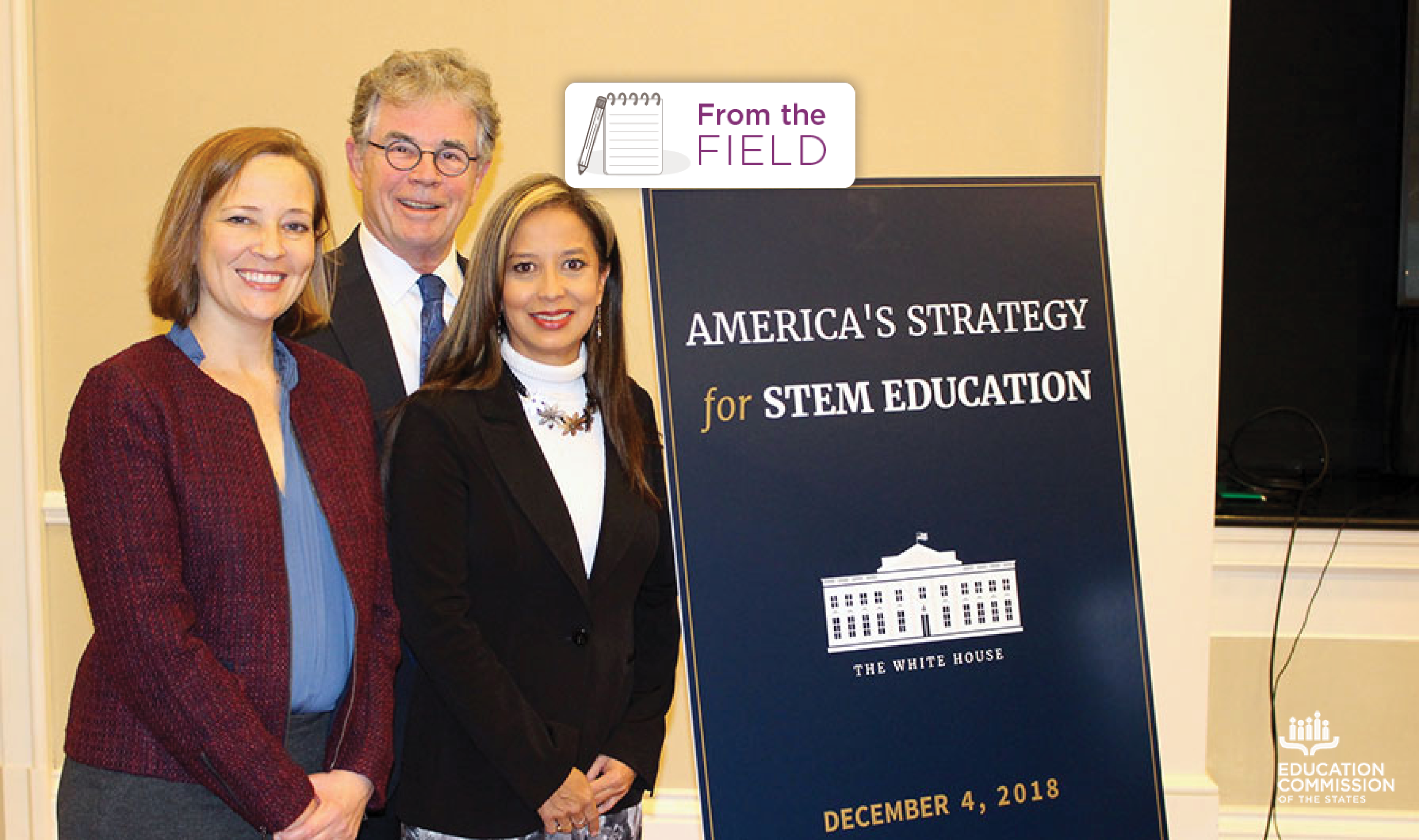Career and technical education (CTE) dual enrollment – it may just be the Reese’s peanut butter cup of policy strategies to improve student transitions from high school to careers. The research tells us that just like chocolate and peanut butter, dual enrollment and CTE are good by themselves, but even better together when it comes to positive outcomes, especially for traditionally underserved youth.
Yet in spite of CTE dual enrollment program success, participation rates in many states lag behind enrollments in traditional academically-oriented dual enrollment courses. It’s possible that lower CTE dual enrollment participation rates are partly due to policy barriers specific to the unique demands of CTE dual enrollment programs. Framed as a complement to Education Commission of the States’ 13 model state-level policy components for dual enrollment, the below passage suggests what states can do in response to just a handful of these model policy components. This is still a working draft, and by no means a comprehensive response to the question of policy levers for CTE dual enrollment. Feel free to share your thoughts at jzinth@ecs.org.
Access
- All eligible students are able to participate. Mandating that all high schools/districts offer CTE dual enrollment courses may result in limited course offerings, especially for rural or small schools/districts. To expand course options, K-12 and postsecondary partners may explore creative solutions in terms of course location (third-party location such as career center, regional education provider, postsecondary branch campus or an actual place of business?)
- Student eligibility requirements are based on the demonstration of ability to access college-level content. Ideally this means CTE students hoping to participate in dual enrollment programs are held to the same eligibility requirements as traditional postsecondary CTE program entrants.
- Caps are not overly restrictive. In the most robust programs, students have the opportunity to earn a technical certification or associate’s degree concurrently with a high school diploma.
- Students earn both secondary and postsecondary credit for successful completion of approved postsecondary courses. Under the old “articulation” model, students would not earn postsecondary credit until the student graduated high school and matriculated in the partner postsecondary institution. Unfortunately, many credits were lost through this model as students matriculated in other institutions that didn’t recognize these credits or students were unaware of the processes they needed to go through to have the postsecondary institution award credit on their transcript. Perhaps in recognition of these challenges, states appear to be increasingly specifying that students be awarded (transcripted) both high school and college credit upon successful course completion.
Finance
- Responsibility for tuition payments does not fall to parents. In many CTE dual enrollment programs, it’s not just tuition but equipment costs that can be prohibitively expensive. States should consider funding approaches such as a state fund districts and institutions can draw from to defray equipment costs. Without sitting for certification or licensure exams, students may not derive the full benefit of courses leading to these credentials. States should consider approaches to minimize or eliminate costs, especially for low-income students.
Ensuring Course Quality
- In a twist on the “Courses meet the same level of rigor” in the original model policy components – states need to ensure that postsecondary courses in CTE dual enrollment programs are aligned to current workforce needs, both in the jobs programs are preparing students for, and the knowledge and skills successful students in those courses must acquire.
- Instructors meet the same expectations as traditional postsecondary instructors – this may be an opportunity for community colleges to bring on individuals practicing related occupations as adjunct dual enrollment instructors.








